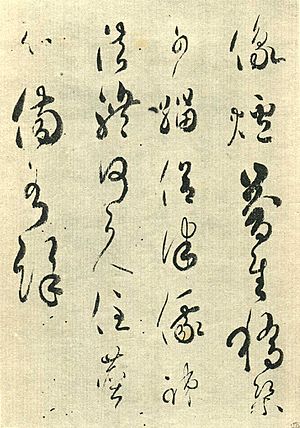Kōnin (era) facts for kids
The Kōnin (弘仁) era was a special period in Japanese history. It was a way of counting years, known as a nengō (年号). This era came after the Daidō era and before the Tenchō era. The Kōnin period lasted from September 810 to January 824. During this time, two emperors ruled Japan: Emperor Saga (嵯峨天皇) and Emperor Junna (淳和天皇).
Important Events of the Kōnin Era
The Kōnin era saw several important events that shaped Japan.
- 812 (Kōnin 3): An official book explaining the Nihon Shoki was written. The Nihon Shoki is an ancient book about Japan's history.
- 820 (Kōnin 11): Japan's legal code was updated. All the laws since the year 701 were rewritten into 50 volumes. This helped organize the country's rules.
- 822 (Kōnin 13): The monk Saichō passed away. Saichō was very important because he founded the Tendai (天台宗) sect of Buddhism in Japan.
- May 30, 823 (Kōnin 14): Emperor Saga decided to step down from his role. This is called abdicating. His younger brother then took over as the new emperor. Soon after, his brother, Emperor Junna, officially accepted the duties of the monarch. This was confirmed in special ceremonies.
This era is also part of a larger historical period called Kōnin-jōgan, which lasted from 810 to 877. During this time, Buddhism and the arts became very important in Japan.
Related Pages
External Links
- National Diet Library, "The Japanese Calendar" -- historical overview plus illustrative images from library's collection
See also
 In Spanish: Kōnin (era) para niños
In Spanish: Kōnin (era) para niños

All content from Kiddle encyclopedia articles (including the article images and facts) can be freely used under Attribution-ShareAlike license, unless stated otherwise. Cite this article:
Kōnin (era) Facts for Kids. Kiddle Encyclopedia.

